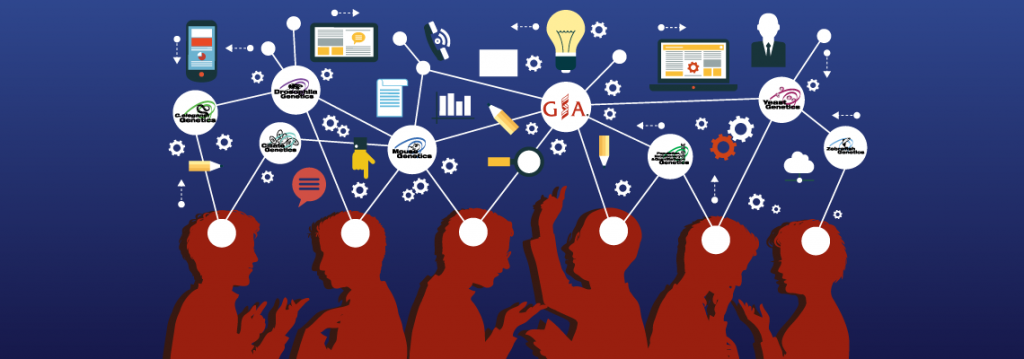In preparation for The Allied Genetics Conference (TAGC), set to take place in Orlando this July, Genes to Genomes is getting the inside scoop from many of the outstanding keynote speakers in our “Behind the Podium” series. Here, GSA member Nathaniel Sharp interviews vertebrate evolution researcher, David Kingsley.

Dr. David Kingsley
NS: It’s exciting that TAGC will involve researchers from so many different areas of genetics. What do you think ties us all together?
DK: I think of genetics as an algorithm to solve biological problems. The principles are always the same, so you can learn how to tackle your own problems by seeing examples from other systems. No matter what you’re working on, genetics can cut through the fog and take you to the key players. TAGC will bring people together to see the power of modern genetics in action.
NS: What will you talk about in your keynote address at the conference?
DK: I want to show how genetics lets us study a range of problems across organisms. One thing we do in my lab is use sticklebacks to learn about the genetic architecture of evolution. Multiple stickleback populations have gone through morphological changes relatively recently, which lets us cross them, map the important changes, and explore whether evolutionary mechanisms are repeatable. As we find common principles that underlie how evolution works, we can extrapolate to other systems. For example, it turns out that certain adaptive color changes have a common genetic basis in sticklebacks and humans. We can study a molecular pathway by looking at fish in British Columbia or people with blond hair in Iceland. Same gene, same problem.
NS: What do you like about working with sticklebacks?
DK: They’re a great organism for asking classic biological questions about evolution. Countless experiments have already been done in natural environments, and it’s all happened so recently that we can find the underlying mechanisms using genetic approaches. It’s nice to get outdoors to collect and study them, but they’re also easy to raise in the lab and they have compact genomes.
NS: How do you think the use of genomic tools has affected genetics research?
DK: The impact has been huge already. These tools let us read the historical record of evolutionary change and study genetics in systems where it wasn’t possible before. Comparing genomes will also teach us about the molecular basis of becoming human. We can now read and enumerate the differences between organisms to find the changes that make humans unique. The big increase in brain power is one trait that I’ll talk about at the meeting.
NS: How has your experience with the GSA affected your research?
DK: The Genetics Society of America journals—GENETICS and G3—are the essential archive of our field. When I was on the Board (2001–20013), we voted to digitize past issues, because looking back through the history of GENETICS is a great way to find both classic results and important problems that could be revisited with new methods. Looking through the journals, I’m always amazed by what has been accomplished, be it last week or a hundred years ago.
NS: What advice would you give to someone just starting their career in genetics?
DK: Pick a problem that you really love—and not just what’s trendy—because that’ll help sustain you through the ups and downs of doing research. We’re at a point in genetics where there’s a huge arsenal of tools available, so if you focus you can figure out almost anything. The premium is on choosing interesting problems, so choose wisely!

Nathaniel Sharp is a postdoctoral fellow studying evolutionary genetics at the University of British Columbia. He uses experimental and genomic methods to investigate spontaneous mutation rates and sex-specific selection in model organisms.































